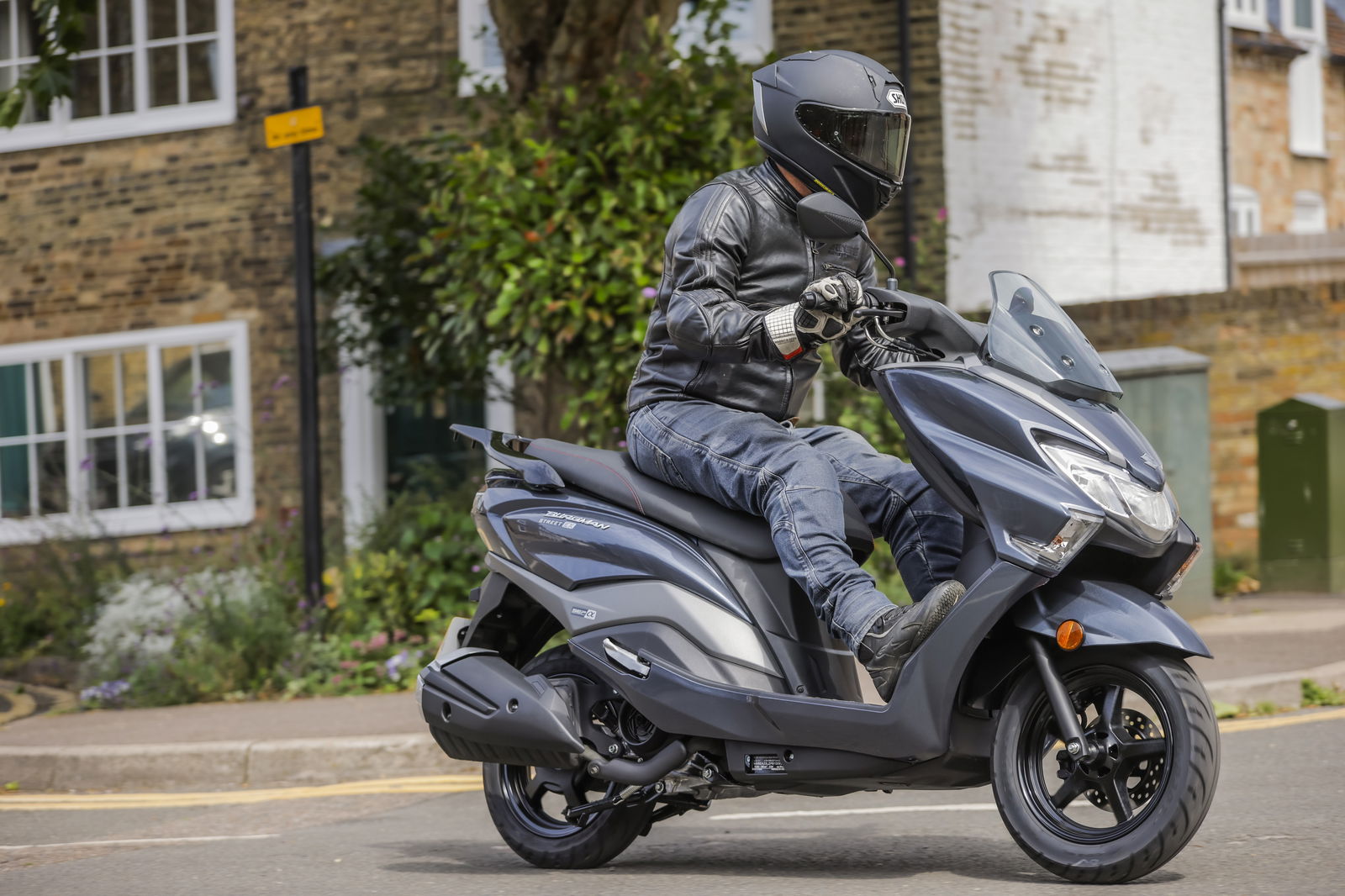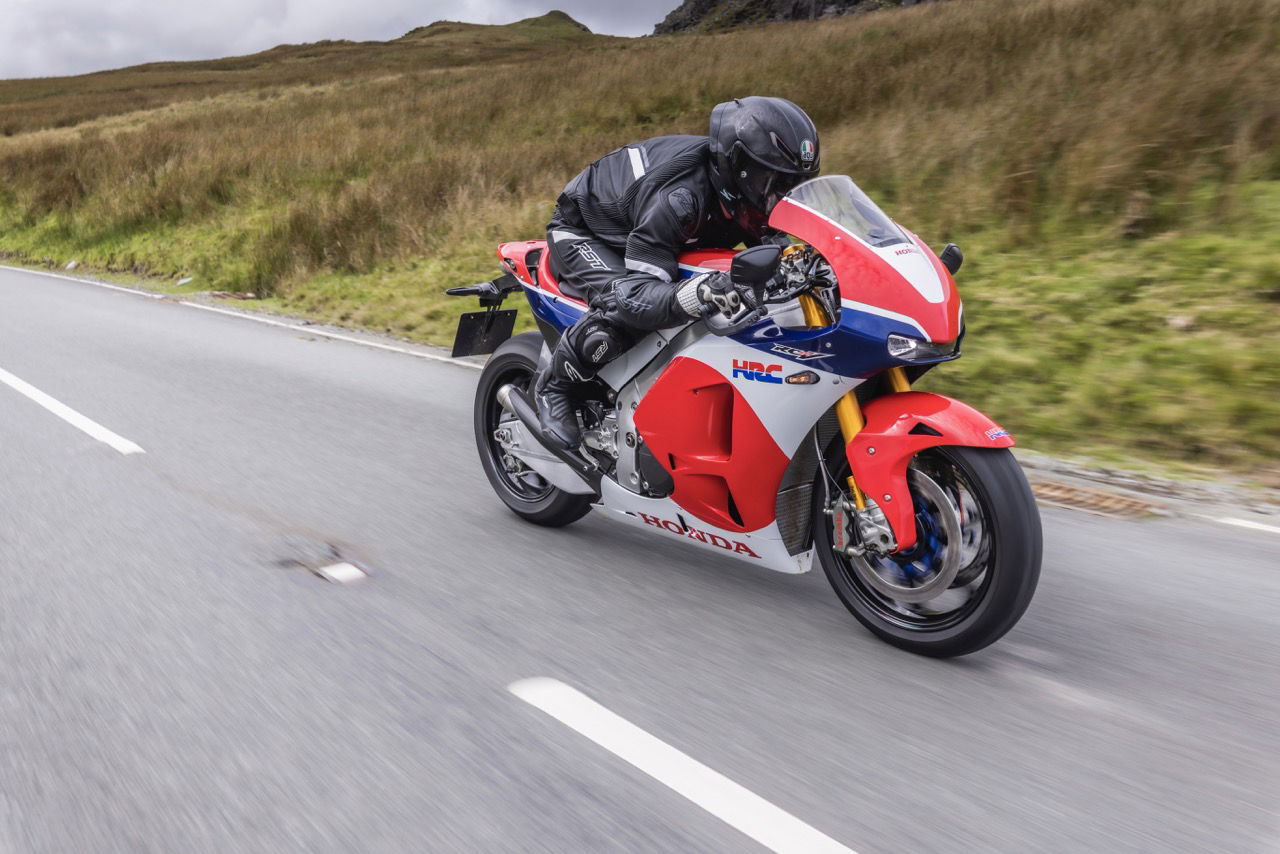TVS Apache RTR 310 review - All the tech, all the time!
Launching into the lightweight A2 sector is the TVS Apache RTR 310, probably the most technologically advanced motorcycle you’ve never heard of.

Most UK bikers will only really know the TVS name thanks to its recent purchase of the historic Norton brand. Its latest bike though, the TVS Apache RTR 310, is slated for a UK release in the not-too-distant future, and as the first machine to come to the UK from the brand, it could seriously shake up the market.
To get a feel for the new model, TVS invited us to the world premiere of the new bike in Bangkok. It was a fleeting introduction to the new machine although it’s maybe not how this bike performs that is really important, it’s more about what it represents.
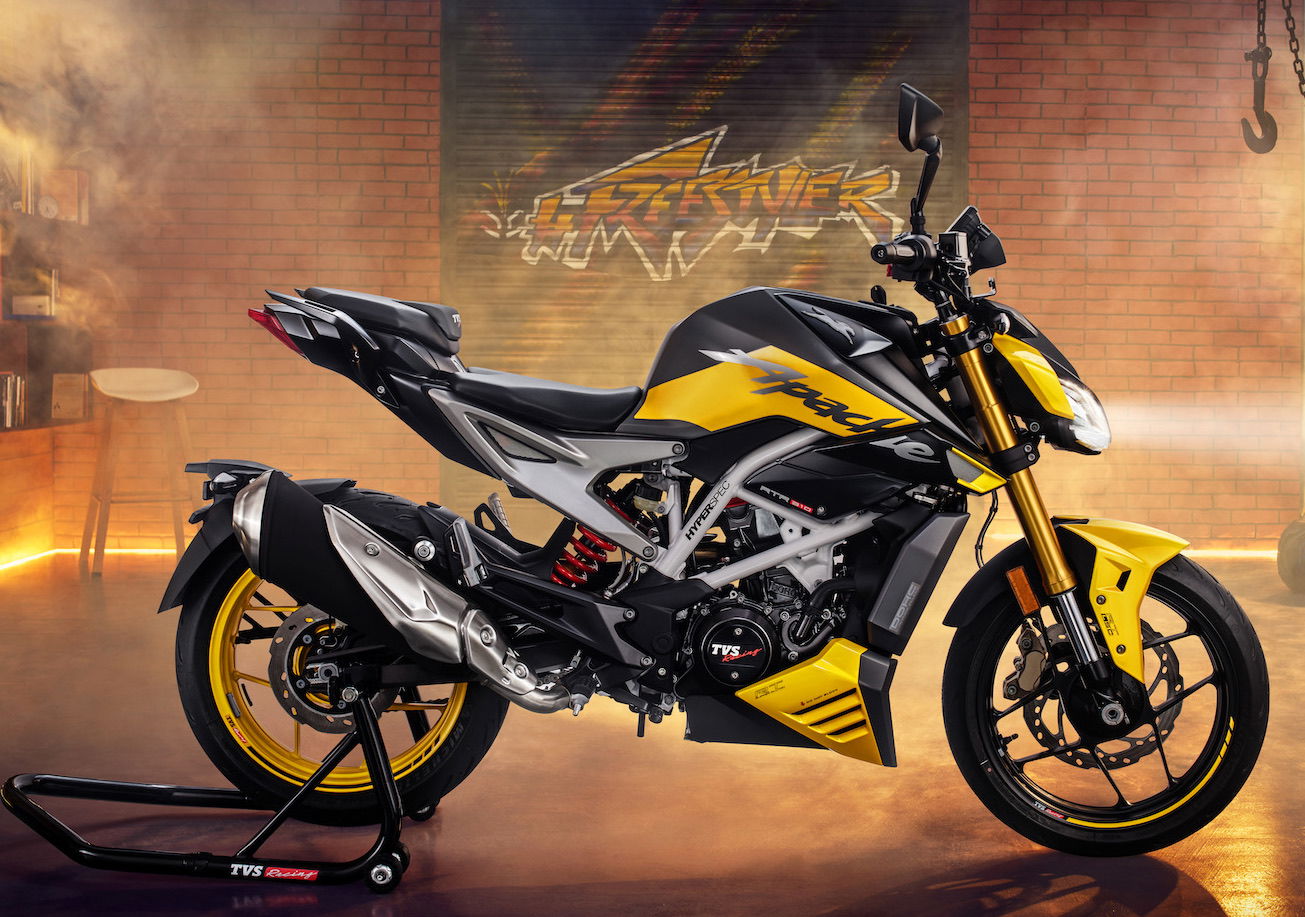
What is the TVS Apache RTR 310
If there are elements of this bike that look familiar, you aren’t imagining things. It is very closely related to the BMW G 310 and G 310 GS, both of which are available in the UK and Europe already and built by TVS in India. To put it simply, the two bikes share the same reverse-inclined back-to-front engine, frame and suspension. There are lots more differences though, and the final specs and features of the G 310 R and the Apache vary significantly.
To sum it up, the Apache RTR 310 is an easygoing A2 motorcycle licence-compatible bike, with roadster styling, and a competitive price. Where this bike and the rest of the competition differ is in the technology included with it as standard.
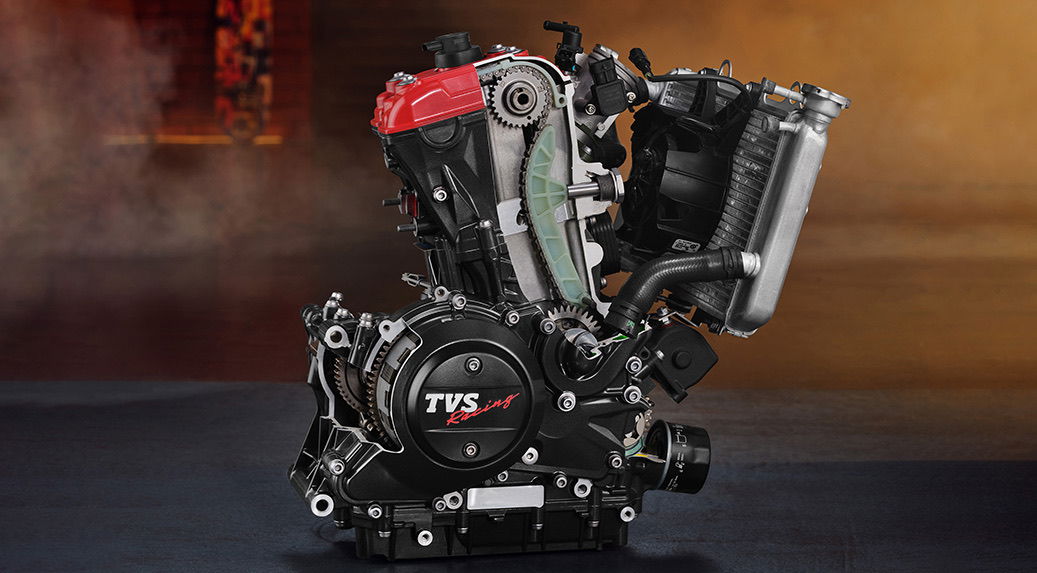
TVS Apache RTR 310 engine
The Apache is powered by a 312.2 cc reverse-inclined DOHC engine. Its design features an intake mounted on the front of the engine with the exhaust at the rear. In this bike, the engine makes 35 bhp at 9,700 rpm and 21 lb-ft at 6,650 rpm. Power is delivered via a six-speed box that is fitted with an up-and-down quickshifter and blipper, and a slip assist clutch.
First impressions of the engine were good, with a nice throttle connection and a very light clutch lever. We are riding on track for this launch and, as I trundled up the pitlane I was quickly up near the top of the rev range and we are barely up to 20mph - this thing feels extremely short-geared! Other than that, the engine feels okay, and the power is fairly peaky, but the torque seems to be about in the right place of the rev range. Like any single-cylinder engine, it is a little bit buzzy at the top, with the bars and pegs becoming quite vibey as we bounced off the 10,000 rpm redline.
Now, the track we were on, that was an eye opener…
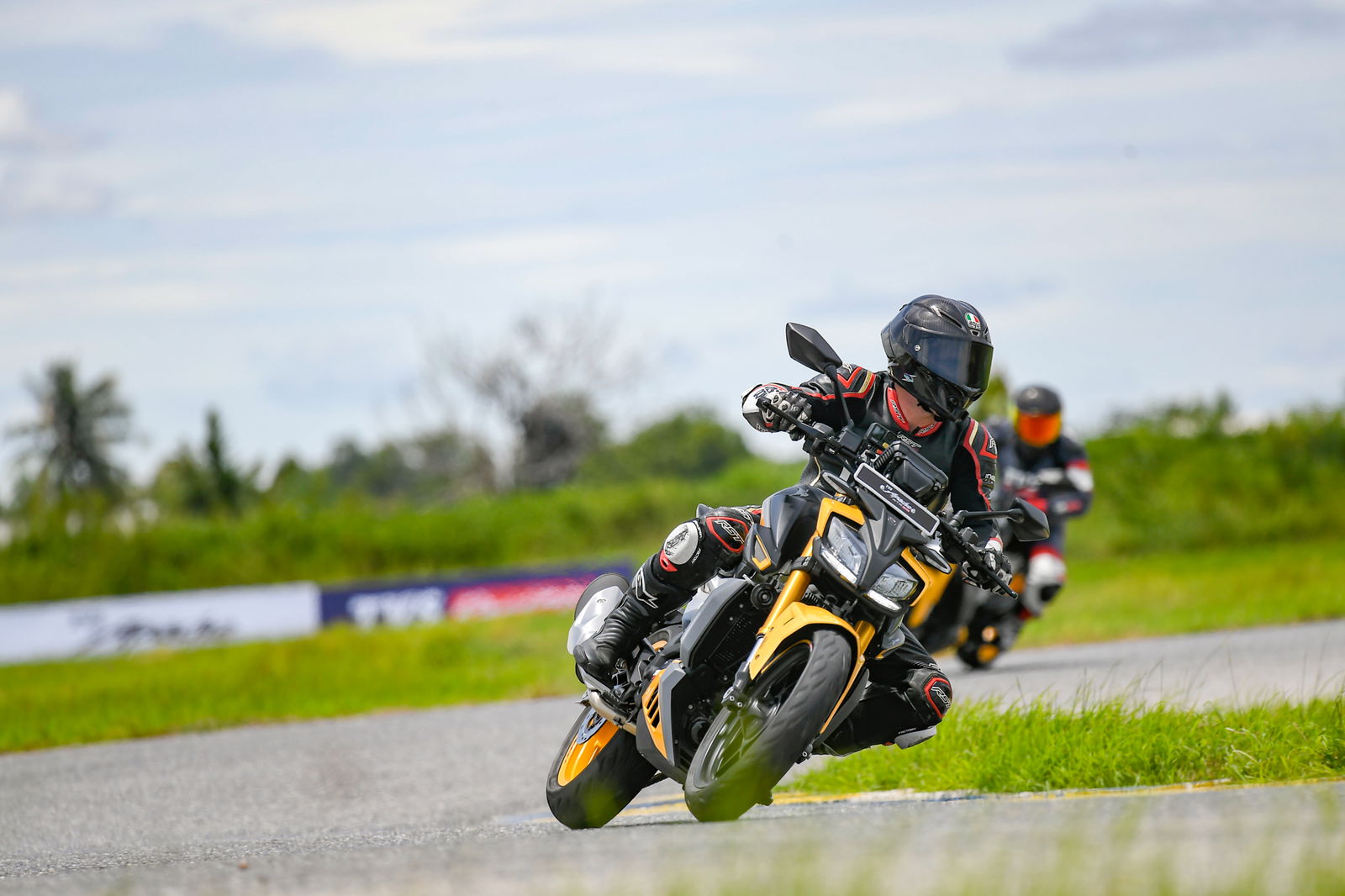
TVS Apache RTR 310 riding review
The launch took place at the Thailand Motorsport Complex, which was spoken about as ‘one of Thailand’s premier motorcycle tracks’. In reality, it was fairly short, very bumpy and the only track I’ve ever encountered that featured actual potholes! This highlighted the bike’s suspension, which was quite soft and underdamped. While that did soak up the bumps quite nicely, for sporty riding I’d prefer a stiffer setting both front and rear. The bikes we rode had the optional Dynamic Kit fitted to them, meaning we had rebound damping and preload adjustability both front and rear. While that would allow you to dial in a firmer setting, on the day that we rode we had very little track time, meaning adjustments were out of the question.

In all honesty, the Apache felt okay up to a point, but you don’t have to be a very quick rider to push the bike out of its comfort zone. The first sign you are reaching the limit is decking it out on the pegs, the further past that point you go the more it feels like a fish out of water.
It is worth noting here that the Apache is, first and foremost, a road bike designed for fairly steady road riding. And out on the Indian and Asian roads where the bike will be first released, I’m sure that soft and forgiving setting will make riding a much more pleasurable experience.
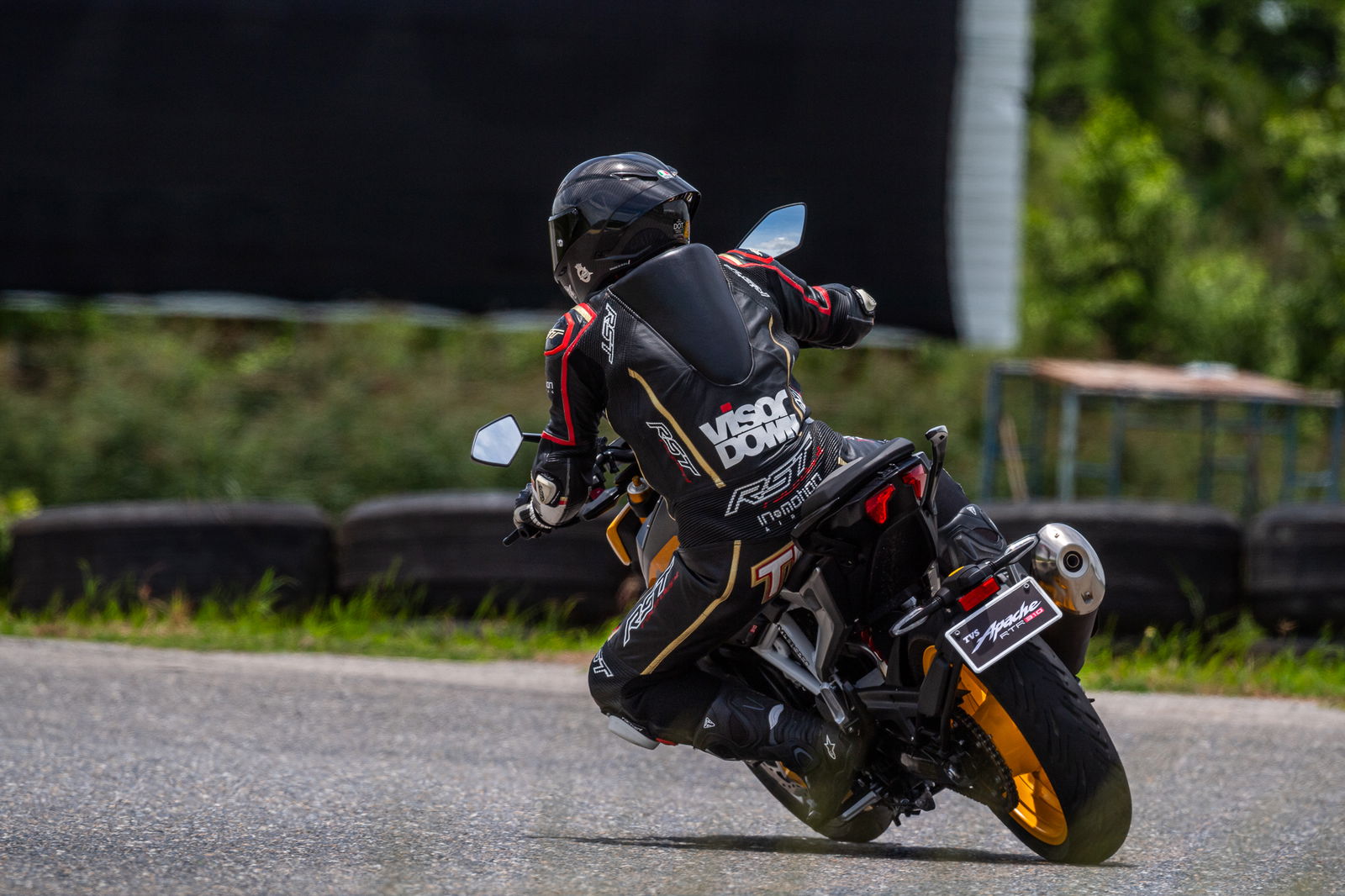
On the plus side, the Apache RTR 310 feels super lightweight and flicks from side to side with ease. The steering at low speed is also very light, and I was happy to see that TVS hadn’t scrimped on the rubber, with decent-spec Michelin Road 5 hoops performing well on the track. It’s nice to see TVS go down this route, as one of the main pitfalls of the Royal Enfield Hunter 350 I rode last year (also in Bangkok) was that its budget CEAT tyres were woeful in any conditions.

TVS Apache RTR 310 electronics
One area that TVS has absolutely gone to town on this bike is with its electronics. It’s stacked to the rafters with tech and gadgets and has a number of systems that aren’t even a feature on some of the most expensive sports bikes from Europe and Japan. It does, though, remain to be seen how handy they will be in the real world, or how many potential Apache owners will utilise the full suite.
Starting at the front, full LED lighting is standard and the headlight can dip automatically depending on the speed of the bike. The rear light also gets the dynamic treatment and will flash when the brake is first applied, and then become a solid brake light after a couple of seconds of deceleration. I think that’s a great feature and, as a rider who flashes the brake light when slowing to a stop, I’d quite like other manufacturers to apply the same method on their own bikes.
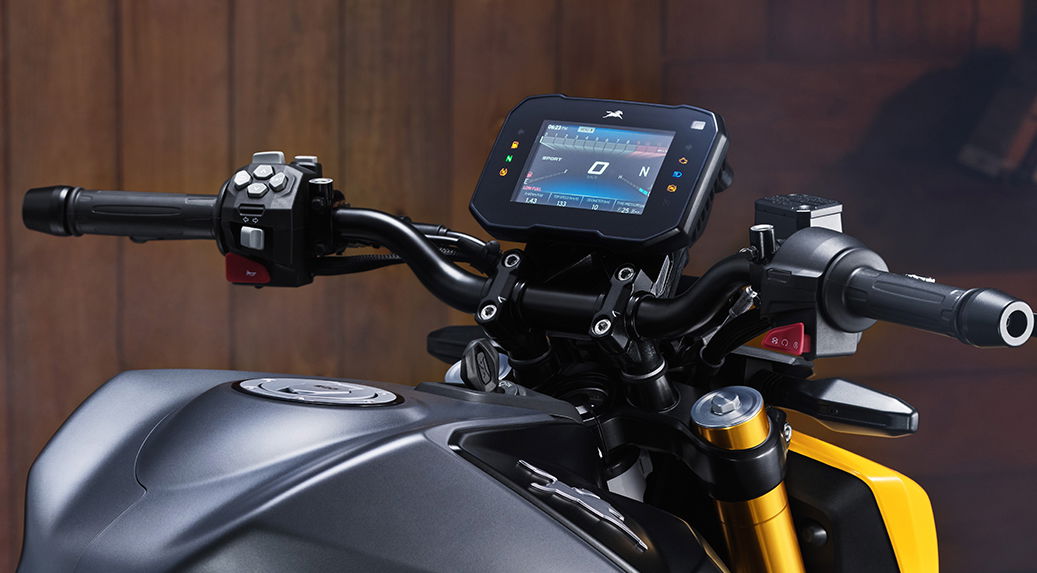
The IMU, as fitted on the bikes we rode, is part of the optional Dynamic Pro kit, and that unlocks a host of electronic aids. You have the normal functions such as switchable ABS (which includes a Supermoto mode that disables the rear ABS), traction control, rear lift control and wheelie control. Another feature of the bike is Slope Dependant Control, a system that can intervene when the bike is being ridden down a steep slope and the front brake is applied. It’s designed to prevent an inadvertent stoppie, by releasing some of the pressure from the braking system to keep both wheels on the road.
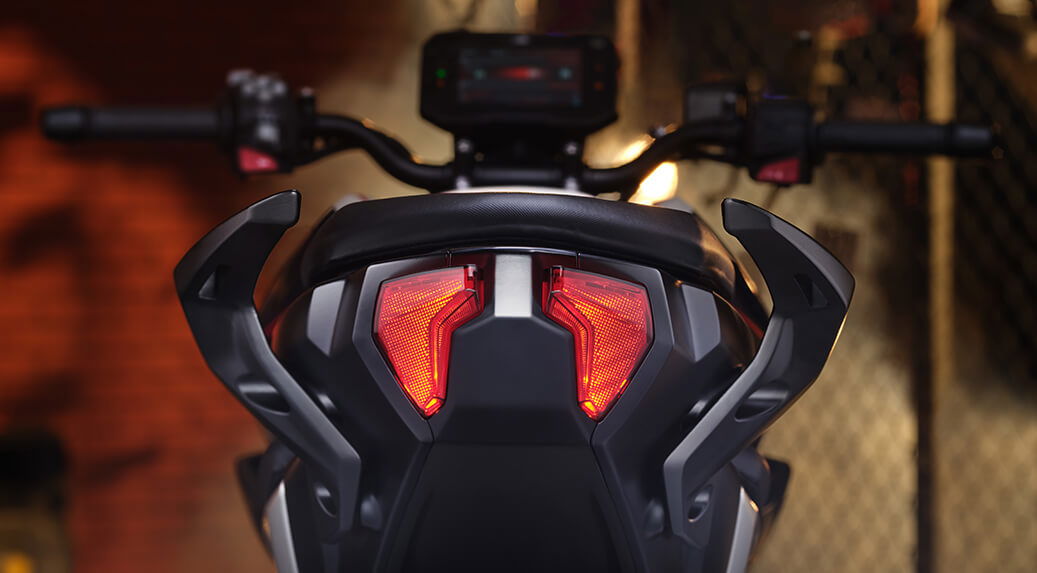
As you’d expect, with all this technology, a 5-inch TFT dash is standard on the Apache, and it’s a very nice-looking and easy-to-read item. The TFT brings with it GoPro Control, Music Control, Voice Assist, Smart Helmet Device Connectivity, Telephony and Navigation, which are all normally features only found on much larger capacity, more expensive adventure and touring machines. Changing modes (there are five riding modes to choose from) and navigating the menus on the bike was refreshingly simple, and it’s not the kind of machine you need to spend lots of time with to get to grips with how all the technology works.
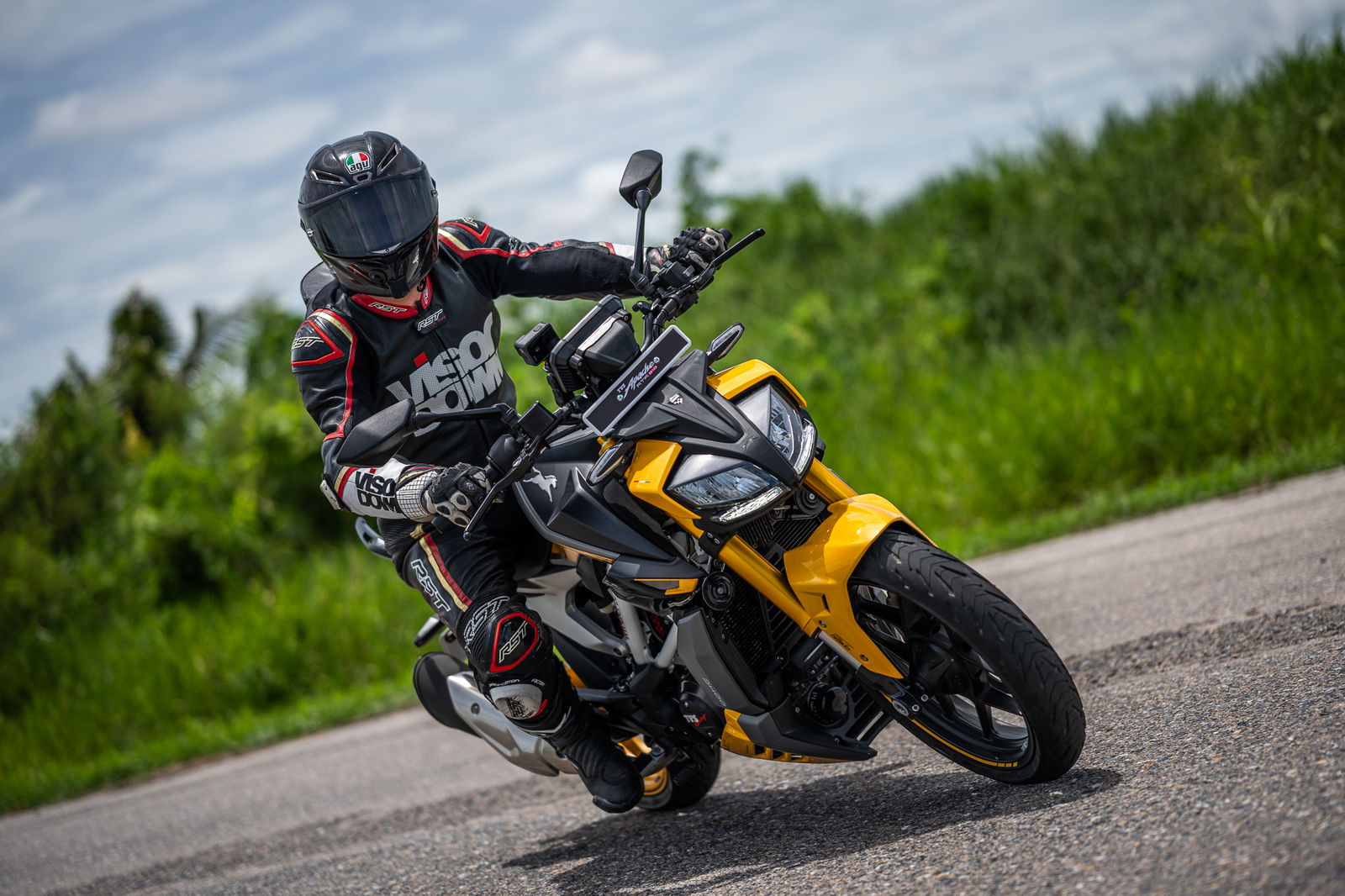
One feature of the TVS that I don’t think I’ve ever seen on a bike before is the climate-controlled seat. Yep, you read that right, the Apache RTR 310 has a seat that can heat and cool to keep the rider comfortable. The seat is cooled thanks to a small condenser system mounted beneath the seat. We didn’t get to actually see the unit, but I’m guessing it’s a similar design to the ones found in electrically powered cool boxes and mini-fridges. Two fans then feed that cold air up to the surface of the seat to keep you comfortable in hot weather. Whether you see this as a handy feature to have, or answering a question that nobody asked will probably come down to where in the world you live and, on the launch in full leathers, I couldn’t feel any benefit from the system whatsoever. The seat can also go the other way and features heating elements to warm your backside during cold weather. A much more handy feature over here in the UK!
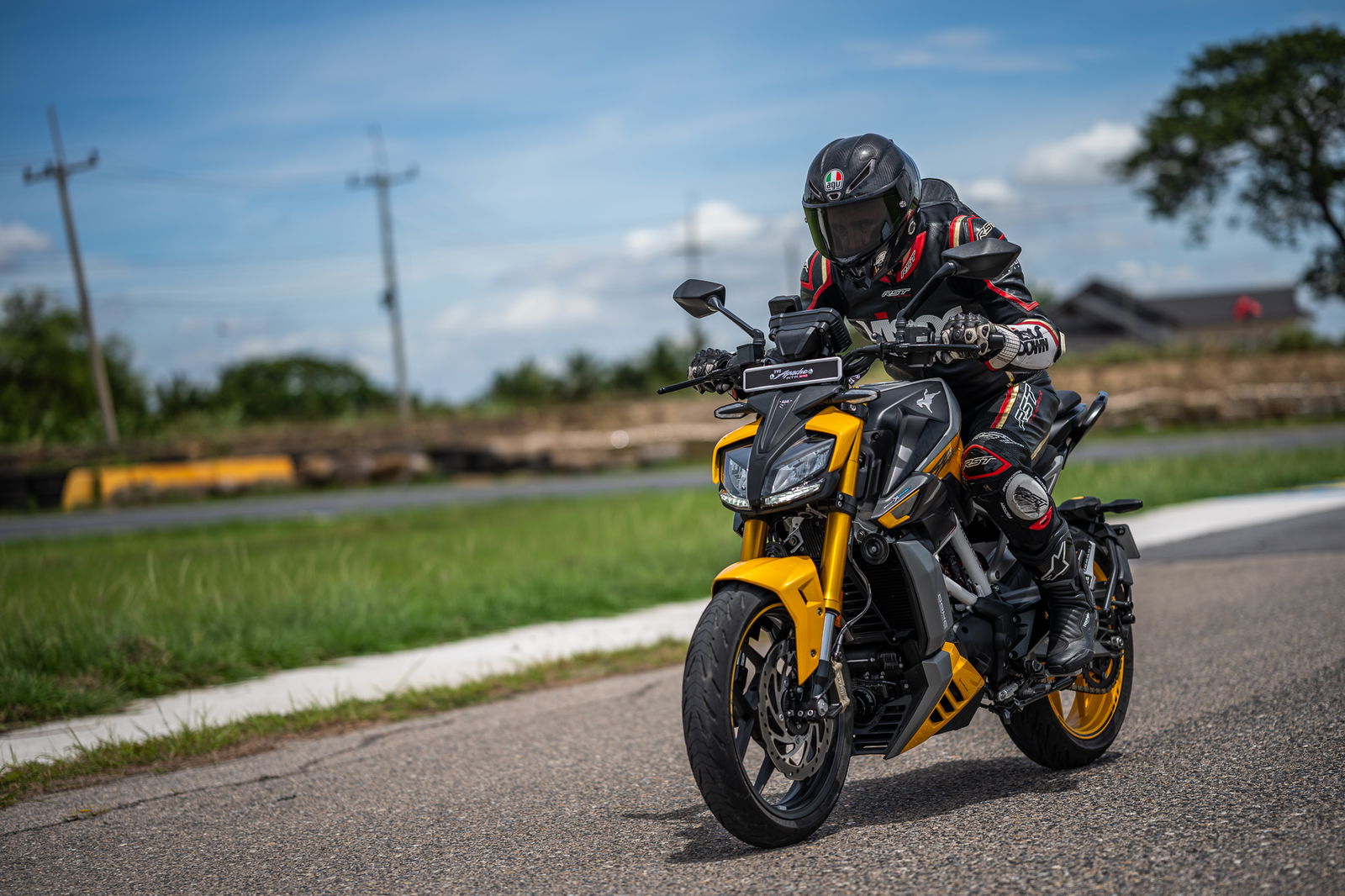
TVS Apache RTR 310 verdict
TVS has done a decent job with the Apache RTR 310. It looks good, is easy to ride, handles well enough to keep you entertained and, should you choose the upgrade packs, is stacked to the rafters with technology and electronics. I do, though, get the feeling that some of those electronic features could have been ditched in favour of squeezing a bit more power from the engine or sharpening up the handling just a little bit. Perhaps in the Asian market, all the blingy electronics will win over buyers who are looking for a slick bike to ride around town. Over here in Europe, though, I’m not sure buyers will be quite so easy to impress.
